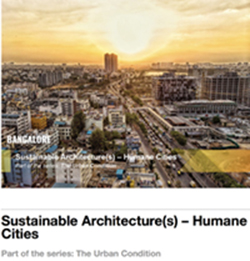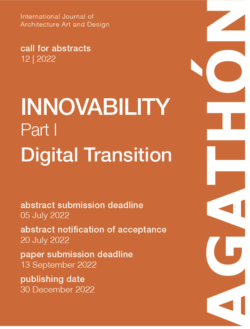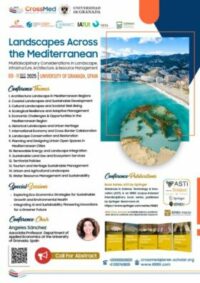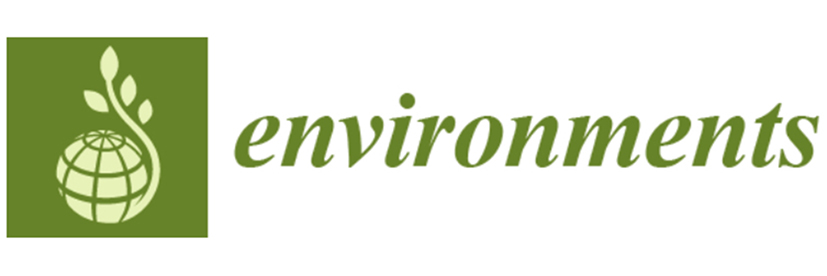ISSN (online): 2076-3298
Call of the Journal:
- Dynamic of Vegetation and Climate Change
- Environmental Implications of COVID-19 Pandemic
- Environmental Sustainability – Life Cycle Assessment – Energy and Environmental Technology
- Groundwater Quality and Groundwater Vulnerability Assessment
- Indoor and Outdoor Air Particulate Matter
- Monitoring and Assessment of Environmental Quality in Coastal Ecosystems
- Monitoring and Management of Inland Waters
- Multiple Approaches for Environmental Assessment of Transitional and Coastal Waters
- Plastic Contamination | Challenges and Solutions
- Response to Current Air Quality Changes in Small and Large Areas
- Restorative Agriculture
- Risk Assessment for Workplace Exposure to Natural Radioactivity
- Rural-Urban Relations and Sustainable Food Systems
- Soil Pollution Assessment and Sustainable Remediation Strategies
Mar
2021
Groundwater resources are under intense anthropogenic pressures and constant threat of pollution. Human activities, such as agriculture, urbanization and industry, have caused irreversible degradation of groundwater quality; therefore, prevention is the most appropriate strategy in the fight against groundwater pollution. Vulnerability and pollution risk maps of groundwater constitute important tools for groundwater management and protection. Groundwater vulnerability is divided into specific vulnerability and intrinsic vulnerability. Intrinsic vulnerability of an aquifer can be defined as the ease with which a contaminant introduced onto the ground surface can reach and diffuse in groundwater. Specific vulnerability is used to define the vulnerability of groundwater to particular contaminants or a group of contaminants by taking into account the contaminants’ physicochemical properties and their relationships. Groundwater pollution risk can be defined as the process of estimating the possibility that a particular event may occur under a given set of circumstances and the assessment is achieved by overlaying hazard and vulnerability. This Special Issue will focus on exploring application of groundwater vulnerability and pollution risk assessment in porous, karst and fissured rock aquifers located in coastal and inland zones. We invite the interested hydrogeologists and other researchers from the related fields to contribute high-quality original research as well as review articles in the stated issue.
Keywords: Intrinsic and Specific Vulnerability; Pollution risk; Coastal Aquifers; Karst and Fissured rock aquifers; GIS environment; Water quality indices; Statistical analysis; Simulation models.
Groundwater Quality and Groundwater Vulnerability Assessment
Groundwater resources are under intense anthropogenic pressures and constant threat of pollution. Human activities, such as agriculture, urbanization and industry, have caused irreversible degradation of groundwater quality; therefore, prevention is the most appropriate strategy in the fight against groundwater pollution. Vulnerability and pollution risk maps of groundwater constitute important tools for groundwater management and protection. Groundwater vulnerability is divided into specific vulnerability and intrinsic vulnerability. Intrinsic vulnerability of an aquifer can be defined as the ease with which a contaminant introduced onto the ground surface can reach and diffuse in groundwater. Specific vulnerability is used to define the vulnerability of groundwater to particular contaminants or a group of contaminants by taking into account the contaminants’ physicochemical properties and their relationships. Groundwater pollution risk can be defined as the process of estimating the possibility that a particular event may occur under a given set of circumstances and the assessment is achieved by overlaying hazard and vulnerability. This Special Issue will focus on exploring application of groundwater vulnerability and pollution risk assessment in porous, karst and fissured rock aquifers located in coastal and inland zones. We invite the interested hydrogeologists and other researchers from the related fields to contribute high-quality original research as well as review articles in the stated issue.
Keywords: Intrinsic and Specific Vulnerability; Pollution risk; Coastal Aquifers; Karst and Fissured rock aquifers; GIS environment; Water quality indices; Statistical analysis; Simulation models.
AGRICOLA (National Agricultural Library), AGRIS Agricultural Sciences and Technology (FAO), DOAJ, Emerging Sources Citation Index – Web of Science (Clarivate Analytics), Genamics JournalSeek, GeoRef (American Geosciences Institute),Norwegian Register for Scientific Journals, Series and Publishers (NSD), Scopus (Elsevier) Web of Science (Clarivate Analytics), CLOCKSS (Digital Archive), e-Helvetica (Swiss National Library Digital Archive), Academic OneFile (Gale/Cengage Learning), Google Scholar J-Gate (Informatics India), ProQuest Central (ProQuest), Science In Context (Gale/Cengage Learning), WorldCat (OCLC).
Info at: www.mdpi.com/journal/environments/apc
Guest Editors
Prof. Dr. Konstantinos Voudouris
Dr. Kazakis Nerantzis










